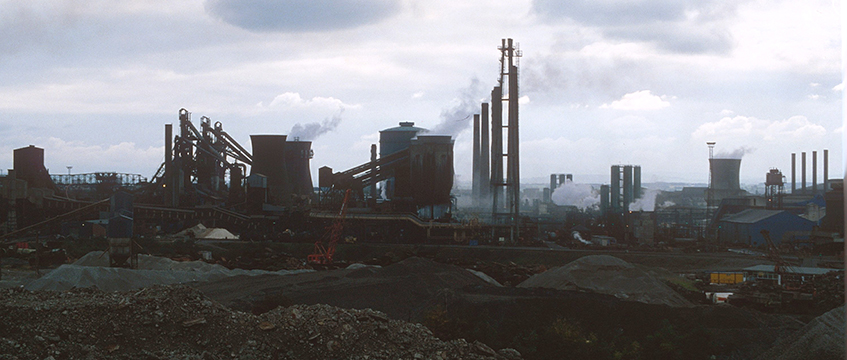Ravenscraig steelworks in North Lanarkshire closed some 25 years ago.
In 1994, the site’s owners – British Steel, the local enterprise company and Motherwell District Council – agreed a development strategy for the 11,000-acre site.
A masterplan was drawn up in 1997 and plans for a new town on the site by joint venture partners Wilson Bowden, Scottish Enterprise and Tata Steel were submitted in 2001. Outline planning was secured in 2003.
It was all going relatively smoothly for such a major regeneration project. But then progress slowed. Massively.
There were legal challenges from neighbouring landlords, funding issues and the global financial crisis.
But last month Ravenscraig Ltd, the development company formed by the jv partners, revealed a new masterplan for the site.
Could this be the plan that finally gets the scheme off the ground and turns one of the most accessible places in Scotland (more than two-thirds of the country’s population live within a 90-minute drive) into one of the most successful?
The crucial difference between the new and old plans is that the amount of shopping space has been reduced from 1m sq ft to just a few stores, removing the biggest area of contention to the original plans.
In 2005, Landsec, British Land and Standard Life launched a legal bid to block the development.
They claimed nearby town centres would suffer from the influx of an additional 1m sq ft of shops.
At the time, British Land and Landsec’s joint venture, Scottish Retail Property Limited Partnership, owned more than 1.4m sq ft of shops in Scotland and argued that Ravenscraig would harm nearby town centres in Motherwell, East Kilbride, Hamilton, Coatbridge and Airdrie.
A two-year legal battle ensued. The Ravenscraig developers won, but by the time the high court battle was over, the global financial crisis was on its way.
For David Smith, who was retail asset manager for Landsec at the time of the initial proposals, the new plans are, in a way, a victory for those who contested the original designs.
“The key objective was to get it delayed and then to get rid of the retail, so in a sense, the battle has been won,” he says.
“Glasgow has enough regional centres and there is probably around 4m sq ft of retail in the area now.
The new masterplan
- 550 homes to add to the 450 completed homes on the site
- A new primary school to be developed once the residential element is completed
- A convenience store close to the Marston’s pub and hotel in addition to other local community shops
- Space for offices and commercial businesses in the town centre, as well as other employment land development to the west of the site
- More than 17 acres of parkland
“I don’t think there was ever going to be enough demand to support it. It wouldn’t have been commercially sustainable.”
Of course, the retail market has undergone a dramatic transformation over the past decade, particularly with the rise of e-commerce, and Ravenscraig development director Nick Lewis stresses these evolving market fundamentals were more prevalent in the decision to reduce the retail.
He says: “We are not providing the same focus on retail. It is too early to say how much retail there will be as the plans are still not complete. Bearing in mind the original masterplan was created in 2004, the retail has been changed to suit modern demand.”
This may solve any issues with competition, but there are concerns the reduction of retail could remove significant employment opportunities within the completed Ravenscraig town.
Jamie Doran, development director at Savills in Glasgow, says: “They have been battling with the council as they didn’t want to lose the potential for jobs on the site, so they are now looking at uses that will be more appropriate.”
Lewis says maintaining employment opportunities is still a priority.
“We are focusing on the employment opportunities and there will be some significant opportunities across the business park.
“We have a large area designated to provide industrial – it could be manufacturing or distribution – and we are also hoping to target further leisure facilities,” he says.
When complete, Ravenscraig will be home to one of Scotland’s largest sports centres, a 17-acre park and around 1,000 homes.
“I don’t think anyone is going to contest it now,” says Smith. “Because it is now residential-led I think it will get the go-ahead. Now it is what it should have been all along.”
Lewis adds: “We are looking to finalise the masterplan in 2018, but it is still probably a 20-year project.
“The partners are committed to making the site work, and we have all put a lot of time and effort in over the past 10 years.
“We [the partners] have a lot of chemistry, and we are working together to make this happen.”
Like the steel that was manufactured on the site, Ravenscraig has to be among the toughest of redevelopment projects yet to be built.
Whether the developers behind it have the strength and durability to reinvigorate one of Europe’s largest derelict sites will be revealed as these latest plans make their way from concept to solid form.
To send feedback, e-mail amber.rolt@egi.co.uk or tweet @AmberRoltEG or @estatesgazette











